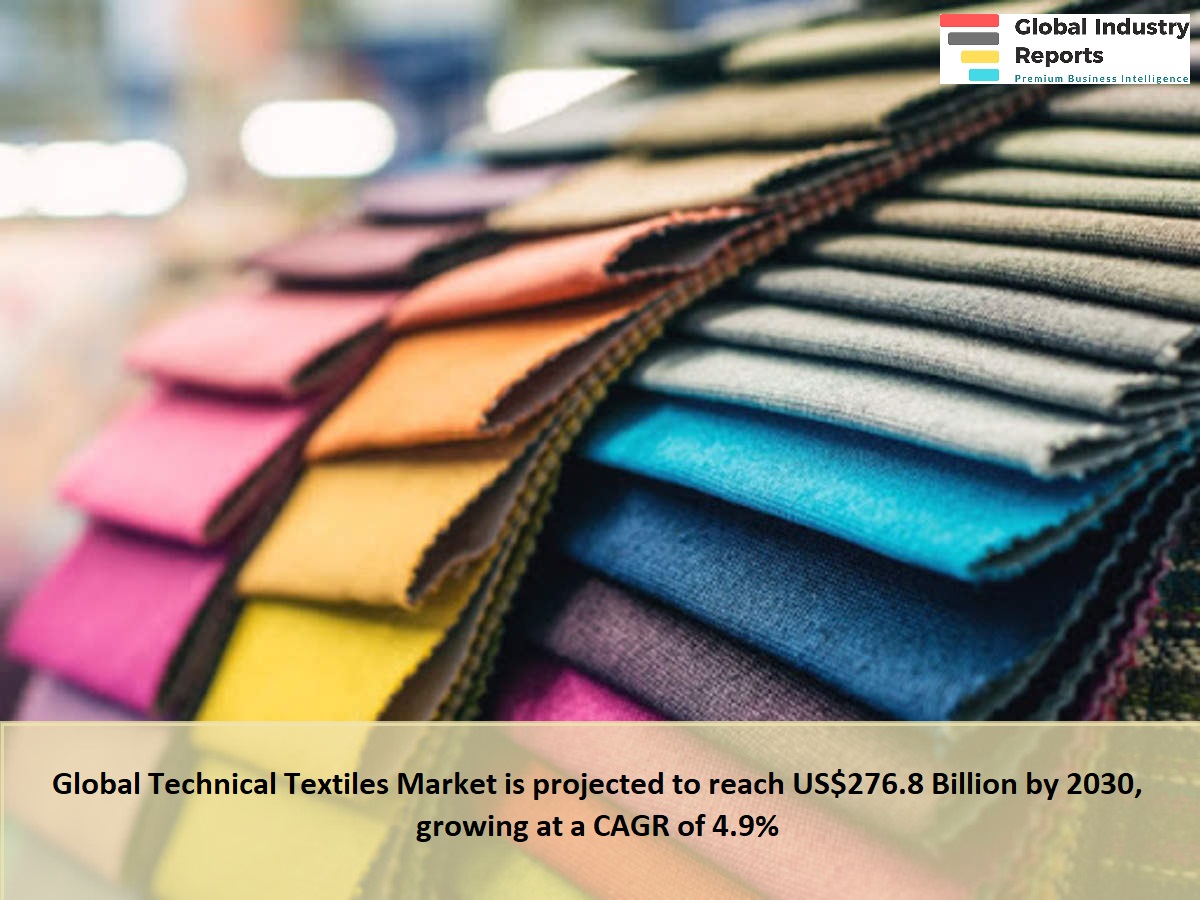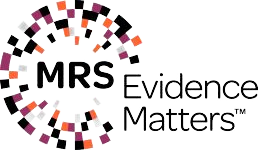Report Overview
- Understand the latest market trends and future growth opportunities for the Technical Textiles industry globally with research from the Global Industry Reports team of in-country analysts – experts by industry and geographic specialization.
- Key trends are clearly and succinctly summarized alongside the most current research data available. Understand and assess competitive threats and plan corporate strategy with our qualitative analysis, insight, and confident growth projections.
- The report will cover the overall analysis and insights in relation to the size and growth rate of the “Technical Textiles Market” by various segments at a global and regional level for the 2010-2030 period, with 2010-2022 as historical data, 2023 as a base year, 2024 as an estimated year and 2024-2030 as forecast period.
Description:
- The global market for Technical Textiles estimated at US$198.9 Billion in the year 2023, is expected to reach US$276.8 Billion by 2030, growing at a CAGR of 4.8% over the analysis period 2023-2030.
- Woven, one of the segments analyzed in the report, is expected to record a 4.7% CAGR and reach US$109.3 Billion by the end of the analysis period. Growth in the Non-Woven segment is estimated at 5.4% CAGR over the analysis period.
- The Technical Textiles market in the U.S. is estimated at US$49.4 Billion in the year 2023. China, the world`s second largest economy, is forecast to reach a projected market size of US$58.9 Billion by the year 2030 trailing a CAGR of 6.7% over the analysis period 2023-2030. Among the other noteworthy geographic markets are Japan and Canada, each forecast to grow at a CAGR of 2.7% and 3.8% respectively over the analysis period. Within Europe, Germany is forecast to grow at approximately 3.5% CAGR.
- The global technical textiles market is expanding rapidly, driven by key trends and factors. Technical textiles are specialized materials engineered for specific functional purposes across various industries like automotive, healthcare, and construction. Innovations in smart textiles, which incorporate sensors for connectivity and data collection, are a significant trend, particularly in health monitoring. Sustainability is another major focus, with efforts to develop eco-friendly materials and processes. Market growth is fueled by rising demand for durable and functional materials, stringent safety regulations, and technological advancements that enhance the properties and applications of technical textiles.
MARKET DATA INCLUDED
- Unit Sales, Average Selling Prices, Market Size & Growth Trends
- COVID-19 Impact and Global Recession Analysis
- Analysis of US inflation reduction act 2022
- Global competitiveness and key competitor percentage market shares
- Market presence across multiple geographies – Strong/Active/Niche/Trivial
- Online interactive peer-to-peer collaborative bespoke updates
- Market Drivers & Limiters
- Market Forecasts Until 2030, and Historical Data to 2015
- Recent Mergers & Acquisitions
- Company Profiles and Product Portfolios
- Leading Competitors
The Report Includes:
- The report provides a deep dive into details of the industry including definitions, classifications, and industry chain structure.
- Analysis of key supply-side and demand trends.
- Detailed segmentation of international and local products.
- Historic volume and value sizes, company, and brand market shares.
- Five-year forecasts of market trends and market growth.
- Robust and transparent research methodology conducted in-country.
- Qualitative and quantitative analysis of the market based on segmentation involving both economic as well as non-economic factors.
- Provision of market value (USD Billion) data for each segment and sub-segment.
- Analysis by geography, region, Country, and its states.
- A brief overview of the commercial potential of products, technologies, and applications.
- Company profiles of leading market participants dealing in products category.
- Description of properties and manufacturing processes.
- marketed segments on the basis of type, application, end users, region, and others.
- Discussion of the current state, setbacks, innovations, and future needs of the market.
- Examination of the market by application and by product sizes; utility-scale, medium scale and small-scale.
- Country-specific data and analysis for the United States, Russia, China, Germany, United Kingdom, France, Japan, Israel, Saudi Arabia, South Korea, United Arab Emirates, Canada, Switzerland, Australia, India, Italy, Turkey, Qatar, Sweden, Spain, Belgium, Netherlands, Norway, Singapore, Egypt, Denmark, Austria, Vietnam, Brazil, Argentina, Mexico, South Africa, and others.
- Coverage of historical overview, key industrial development and regulatory framework.
- Analysis of competitive developments, such as contracts & agreements, expansions, new product developments, and mergers & acquisitions in the market.
- A look at the opportunities in the market for stakeholders and provide a competitive landscape of the market leaders.
Reports Scope and Segments:
| Report Attribute | Details |
| Market size value in 2023 | USD 198.9 Billion |
| Revenue forecast in 2030 | USD 276.8 Billion |
| Growth Rate | CAGR of 4.9% from 2022 to 2030 |
| Base year for estimation | 2023 |
| Historical data | 2015 – 2022 |
| Forecast period | 2024 – 2030 |
| Quantitative units | Revenue in USD million and CAGR from 2024 to 2030 |
| Report coverage | Revenue forecast, company ranking, competitive landscape, growth factors, trends, DROT Analysis, Market Dynamics and Challenges, and Strategic Growth Initiatives
COVID-19 Impact, Market Growth Trends, Market Limiters, Competitive Analysis & SWOT for Top Competitors, Mergers & Acquisitions, Company Profiles, Product Portfolios, Disease Overviews. Market Size, Market Shares, Market Forecasts, Market Growth Rates, Units Sold, and Average Selling Prices. |
| Segments covered | Material, Type, Technology, Application, Region |
| Regional scope | North America; Europe; Asia Pacific; Latin America; Middle East and Africa and rest of the world |
| Country scope | United States, Russia, China, Germany, United Kingdom, France, Japan, Israel, Saudi Arabia, South Korea, United Arab Emirates, Canada, Switzerland, Australia, India, Italy, Turkey, Qatar, Sweden, Spain, Belgium, Netherlands, Norway, Singapore, Egypt, Denmark, Austria, Vietnam, Brazil, Argentina, Mexico, South Africa, and others. |
| Key companies profiled | 3M Company; AccuGeo Liner, Inc.; ACE Geosynthetics; Agru America Inc.; Ahlstrom-Munksj Oyj; Aksa Akrilik Kimya Sanayii AS; Alyaf Industrial Co., Ltd.; Arville Textiles Ltd.; Asahi Kasei Corporation; Asiatic Fiber Corporation; Auburn Manufacturing, Inc.; Aurich Textiles GmbH; Baltex; Beaulieu International Group; Belton Industries Inc.; Berry Global Group; Borgers SE & Co. KGaA; Bruck Textiles; Carthage Mills, Inc.; Compagnie de Saint-Gobain S.A.; Delcotex; Delfingen Industry S.A; Don & Low Ltd.; Dow Inc.; DSM Dyneema BV; DuPont de Nemours, Inc.; Duvaltex; Fibertex Nonwovens A/S; Freudenberg Group; Freudenberg SE; Gelvenor Textiles; Global Synthetics Pty. Ltd.; GSE Environmental; Hanes Geo Components; Hindoostan Mills Ltd.; Huesker Synthetic GmbH; Huntsman International LLC; International Textile Group; Johns Manville; Kama Holdings Ltd; Kimberly-Clark Corporation; Koninklijke Ten Cate; Lanxess; Lenzing Plastics GmbH & Co KG; Low & Bonar PLC; Milliken & Company; Mitsui Chemicals, Inc.; NAUE GmbH & Co. KG; Nikol Advance Materials Pvt. Ltd; Officine Maccaferri S.p.A.; Propex Operating Company LLC; Royal Ten Cate; Sanrhea Technical Textiles Ltd; SGL Carbon; SKAPS Industries; Solmax; SRF Ltd; Strata Systems Inc.; Techfab India; Teijin Limited; Thrace Group; Toray Industries, Inc.; Toyobo Co; TWE Group GmbH and others |
| Customization scope | Free report customization (equivalent up to 20 analyst’s working days) with purchase. Addition or alteration to country, regional & segment scope. |
| Report Format | PDF, PPT, Excel & Online User Account |
Report Segmented by:
Based on Material:
- Natural Fiber
- Cotton
- Wool
- Others
- Synthetic Polymer
- Polyether sulfone (PES)
- Polyamide (PA)
- Polyacrylonitrile (PAN)
- Polypropylene (PP)
- Polyester
- Others
- Mineral
- Asbestos
- Glass
- Ceramic
- Fiber
- Metal
- Regenerated Fiber
- Rayon
- Acetate
- Others
Based on Technology:
- Woven
- Knitted
- Non-Woven
- others
Based on Application:
- Mobiltech
- Sportech
- Buildtech
- Hometech
- Clothtech
- Meditech
- Agrotech
- Protech
- Packtech
- Oekotech
- Geotech
- Indutech
- Smart Textiles
Based on Region:
- North America
- Europe
- Asia Pacific
- Middle East & Africa
- South America
- Rest Of The World
Companies Covered in Report:
| 3M Company | GSE Environmental |
| AccuGeo Liner, Inc. | Hanes Geo Components |
| ACE Geosynthetics | Hindoostan Mills Ltd. |
| Agru America Inc. | Huesker Synthetic GmbH |
| Ahlstrom-Munksj Oyj | Huntsman International LLC |
| Aksa Akrilik Kimya Sanayii AS | International Textile Group |
| Alyaf Industrial Co., Ltd. | Johns Manville |
| Arville Textiles Ltd. | Kama Holdings Ltd |
| Asahi Kasei Corporation | Kimberly-Clark Corporation |
| Asiatic Fiber Corporation | Koninklijke Ten Cate |
| Auburn Manufacturing, Inc. | Lanxess |
| Aurich Textiles GmbH | Lenzing Plastics GmbH & Co KG |
| Baltex | Low & Bonar PLC |
| Beaulieu International Group | Milliken & Company |
| Belton Industries Inc. | Mitsui Chemicals, Inc. |
| Berry Global Group | NAUE GmbH & Co. KG |
| Borgers SE & Co. KGaA | Nikol Advance Materials Pvt. Ltd |
| Bruck Textiles | Officine Maccaferri S.p.A. |
| Carthage Mills, Inc. | Propex Operating Company LLC |
| Compagnie de Saint-Gobain S.A. | Royal Ten Cate |
| Delcotex | Sanrhea Technical Textiles Ltd |
| Delfingen Industry S.A | SGL Carbon |
| Don & Low Ltd. | SKAPS Industries |
| Dow Inc. | Solmax |
| DSM Dyneema BV | SRF Ltd |
| DuPont de Nemours, Inc. | Strata Systems Inc. |
| Duvaltex | Techfab India |
| Fibertex Nonwovens A/S | Teijin Limited |
| Freudenberg Group | Thrace Group |
| Freudenberg SE | Toray Industries, Inc. |
| Gelvenor Textiles | Toyobo Co |
| Global Synthetics Pty. Ltd. | TWE Group GmbH |
After Sales Support
- Every updated edition of the report and full data stack will be provided at no extra cost for 24 months.
- Latest 2023 base year report.
- Free Updated edition of 2024 every quarter without any hidden cost.
- No user limitation for the report. Unlimited access within the organization.
- Unrestricted post-sales support at no additional cost
- Free report customization (equivalent up to 10 analyst’s working days) with purchase. Addition or alteration to country, regional & segment scope
- Global Industry Reports will support your post-purchases for a period of 24 months to answer any of your queries related to the following market and to provide you any more data needed, for your analysis.
- Option to purchase regional or some selected Chapters from the report.
Key questions that are answered in this report
- What is the current size of global technical textile market?
- How is the technical textile market aligned?
- Who are the key players in the global technical textile market?
- What are the latest ongoing trends in the technical textile market?










